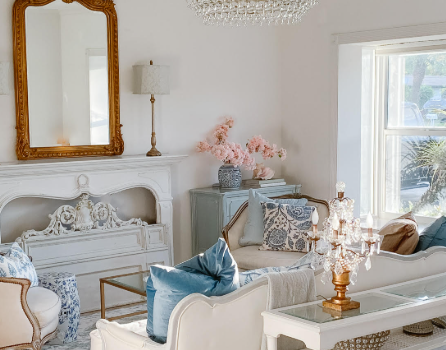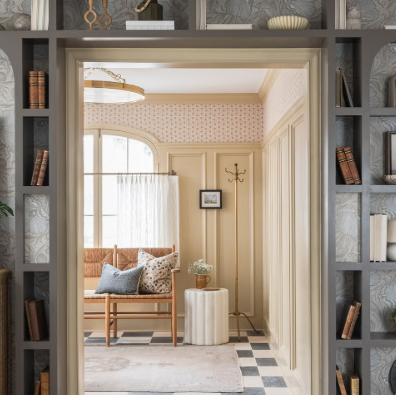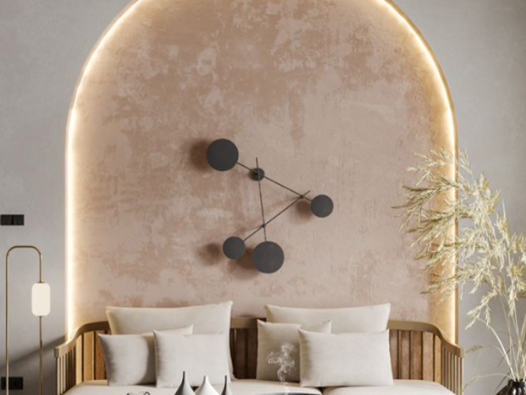
Transitional interior design blends traditional and contemporary elements to create a balanced and inviting space. This style caters to those who appreciate classic design but seek the simplicity and freshness of modern aesthetics. By merging neutral tones, clean lines, and soft textures, transitional design achieves a harmonious look that stands the test of time. In this guide, we’ll explore key features of transitional design, ways to incorporate it into your home, and tips for creating a beautiful and functional living space.
Key Characteristics of Transitional Design
Transitional design is all about balance and sophistication. Here’s a breakdown of the style’s key features:
- Neutral Color Palettes: Soft tones like greys, whites, and beiges form the foundation of transitional interiors.
- A Fusion of Old and New: Transitional design incorporates both traditional and contemporary furniture and decor.
- Minimal Ornamentation: The focus is on function and simplicity, with clean lines and understated decorative details.
- Textural Variety: Fabrics such as linen, cotton, and velvet add warmth and depth to the space.
- Refined, Simple Elements: Decorative accents are used sparingly, ensuring the space remains uncluttered and elegant.
The Evolution of Transitional Design
Transitional design started as a way to bridge the gap between traditional and contemporary styles. Over time, it has evolved into a distinct design style that blends the best of both worlds. The style balances classic lines with modern finishes, creating spaces that feel fresh and familiar. As more homeowners seek comfort and versatility, transitional design has gained popularity for its timeless, adaptable look. Today, it’s recognized as a deliberate choice, not just a mix of old and new, but a cohesive style that embodies both elegance and ease.
Achieving the Transitional Look in Your Home
To create a transitional style home, focus on simplicity and refinement. Here are some key strategies for achieving this look:
- Start with a Neutral Foundation
Begin with neutral colors like soft greys, taupes, and off-whites for your walls, furniture, and decor. These colors provide a calming backdrop and help tie together diverse elements, setting the stage for a cohesive space. - Layer Textures for Visual Interest
Incorporate different textures to add warmth and depth without cluttering the space. Think velvet cushions, natural wood accents, or woven rugs. These textures enhance the transitional vibe while keeping things simple and comfortable. - Mix Traditional and Modern Pieces
The beauty of transitional design lies in the balance between old and new. Pair classic furniture like a vintage armchair with contemporary elements such as a sleek coffee table. This blending creates a welcoming and stylish atmosphere. - Focus on Balance and Harmony
Transitional design thrives on balance. Keep your space harmonious by mixing neutral tones with refined textures and a thoughtful mix of traditional and modern elements. This ensures the space feels timeless and inviting. - Keep it Minimal
Less is more in transitional interiors. Focus on essential pieces that serve a purpose and avoid over-decorating. This simple approach creates an airy, uncluttered space that allows key design elements to shine.
Transitional Living Room Ideas
The living room is often the heart of the home, and achieving the right balance in this space is key to embodying transitional design. Here are some ideas to get started:
- Elegant Seating Arrangements
Choose furniture with clean lines and neutral upholstery. A sofa with subtle curves adds a nod to traditional design, while a contemporary coffee table keeps the look fresh and modern. - Embrace Natural Light
Maximize natural light by using sheer curtains or Roman shades in neutral tones. This helps highlight the windows and create a bright, airy atmosphere. - Incorporate Subtle Decorative Accents
Add personality to your living room with a mix of modern and traditional accessories. Consider pairing a contemporary vase with a classic clock or hanging minimalist art alongside a vintage frame. - Timeless Flooring Choices
Opt for classic hardwood floors and layer them with textured rugs for added comfort and visual appeal. Alternatively, choose neutral stone tiles for a sophisticated touch.
Understanding the Difference: Traditional vs. Transitional
While both traditional and transitional designs incorporate classic elements, there are distinct differences between the two styles.
- Traditional Design
Traditional interiors often feature rich, deep colors, ornate furniture, and luxurious fabrics. They embrace elaborate patterns and intricate moldings. - Transitional Design
Transitional spaces are more subdued, with a focus on neutral colors, streamlined furniture, and simple decor. This style emphasizes comfort, practicality, and ease, creating a more relaxed atmosphere compared to the opulence of traditional design.
Why Choose Transitional Design?
The beauty of transitional design lies in its versatility. It allows for the integration of timeless elements while accommodating modern lifestyles. This style evolves with trends, remaining relevant and stylish over time. Whether you’re renovating a single room or redesigning your entire home, transitional design offers a flexible, balanced approach that works well in any space.
Conclusion
Transitional interior design creates spaces that are both elegant and modern, blending classic details with contemporary simplicity. This timeless style works well for anyone who wants to create a harmonious, functional environment that doesn’t feel outdated or overly formal. By focusing on neutral tones, balancing old and new, and embracing minimalism, transitional design ensures a home that is both inviting and stylish. Whether you’re just beginning to explore this style or you’re already a fan, transitional design can help you achieve a home that feels both fresh and familiar.










